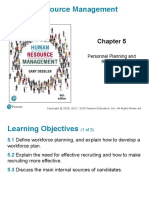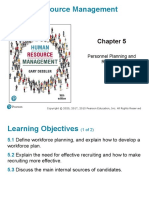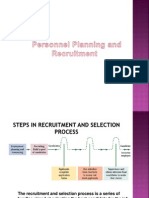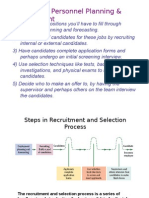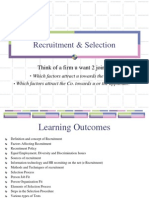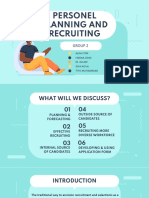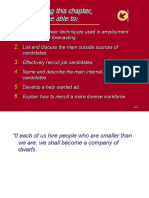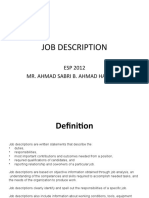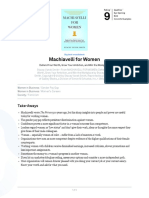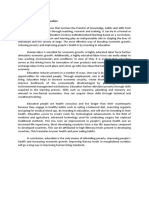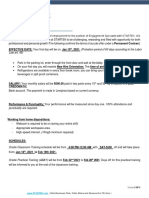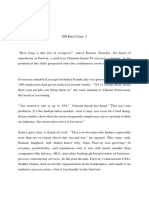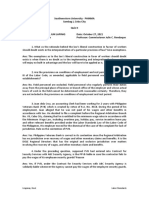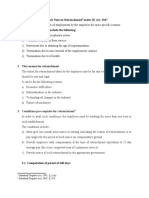0% found this document useful (0 votes)
111 views22 pagesHR Planning & Recruiting Guide
This chapter discusses personnel planning and recruiting. It covers developing a workforce plan through forecasting personnel needs, current employee supply, and external candidate supply. Effective recruiting is important to fill positions and improve engagement. Internal sources like promotions are preferable but external sources like job boards, agencies, and colleges are also discussed. The chapter provides tips on writing job ads, recruiting a diverse workforce, and screening applicants.
Uploaded by
ryhanratul874Copyright
© © All Rights Reserved
We take content rights seriously. If you suspect this is your content, claim it here.
Available Formats
Download as PPTX, PDF, TXT or read online on Scribd
0% found this document useful (0 votes)
111 views22 pagesHR Planning & Recruiting Guide
This chapter discusses personnel planning and recruiting. It covers developing a workforce plan through forecasting personnel needs, current employee supply, and external candidate supply. Effective recruiting is important to fill positions and improve engagement. Internal sources like promotions are preferable but external sources like job boards, agencies, and colleges are also discussed. The chapter provides tips on writing job ads, recruiting a diverse workforce, and screening applicants.
Uploaded by
ryhanratul874Copyright
© © All Rights Reserved
We take content rights seriously. If you suspect this is your content, claim it here.
Available Formats
Download as PPTX, PDF, TXT or read online on Scribd
/ 22







